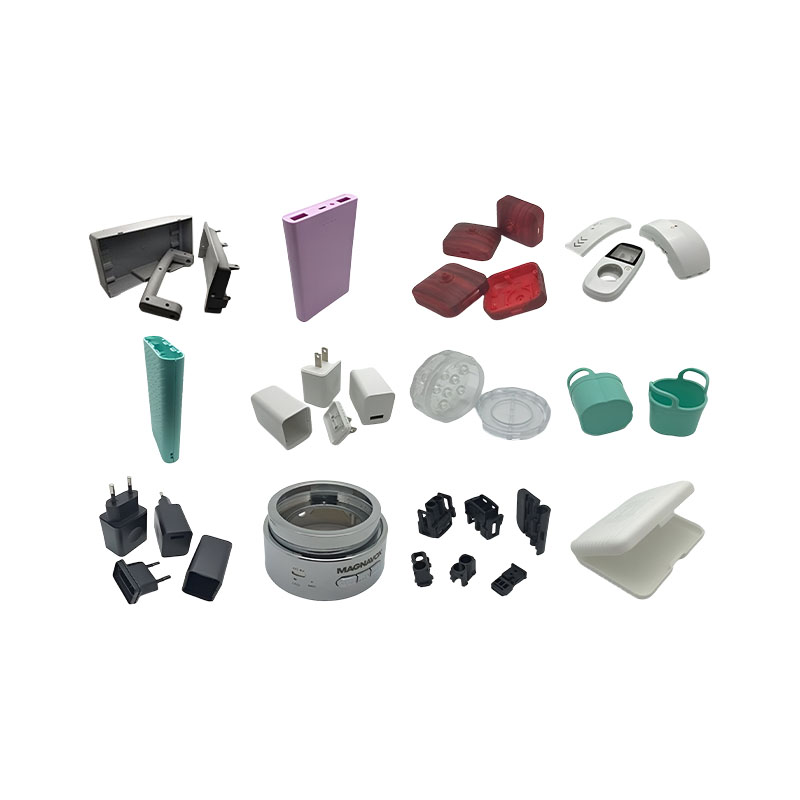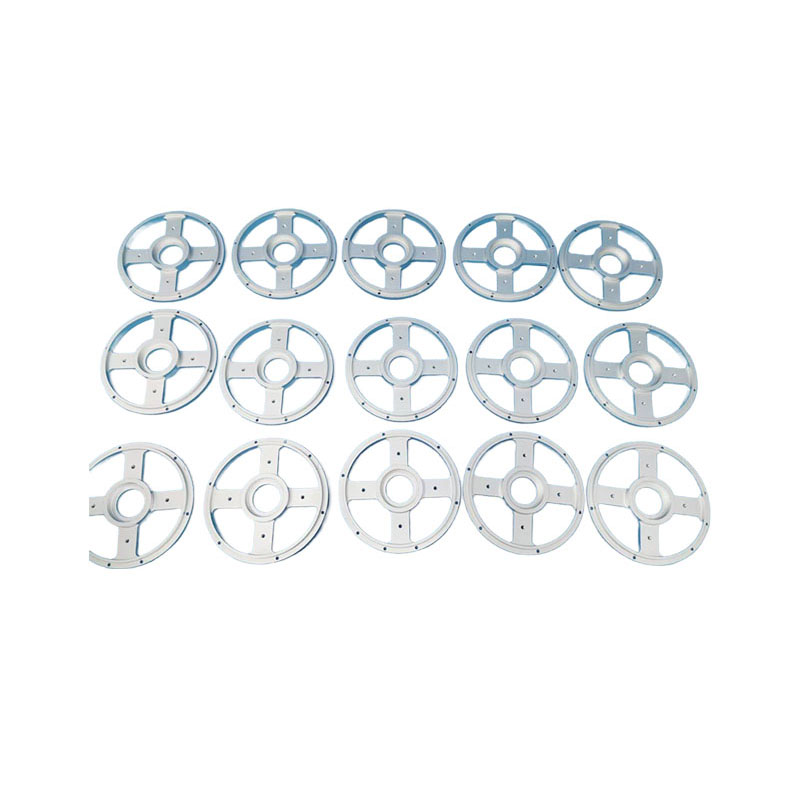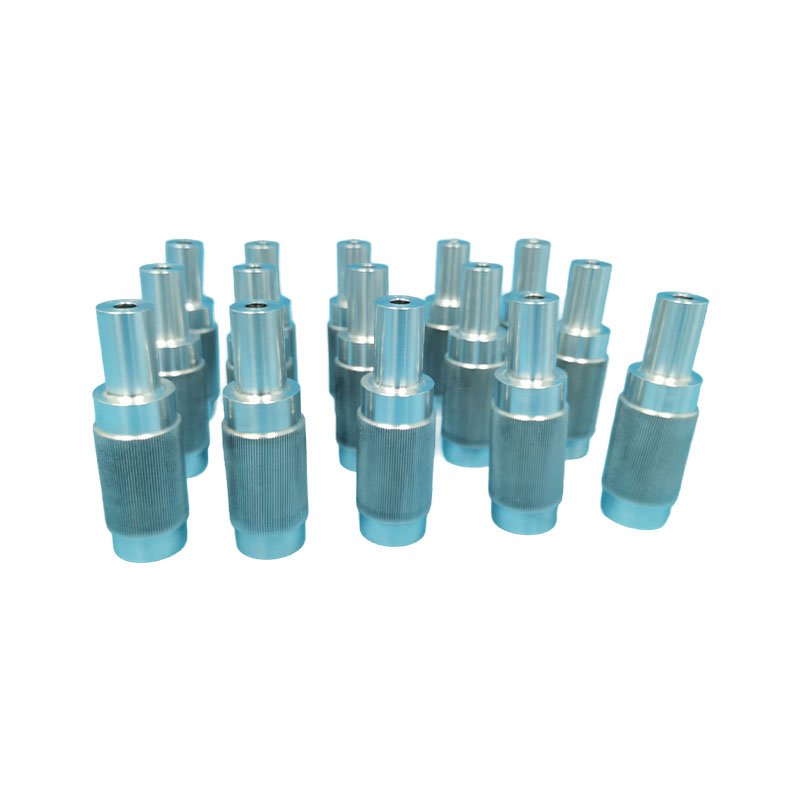What is the importance of CT imaging machine buttons processing in key components of medical equipment?
Release Time : 2025-06-06
In modern medical imaging technology, CT (computed tomography) imaging machine is one of the indispensable and important equipment. It can provide detailed images of the internal structure of the human body, helping doctors to make accurate diagnosis and treatment planning. Although the core technology of CT imaging machine lies in its complex imaging system, some seemingly simple components, such as buttons, also have a crucial impact on the overall performance and user experience of the equipment.
1. Ensure easy and efficient operation
The operation interface of CT imaging machine usually includes multiple function buttons, which are used to start, stop, adjust scanning parameters and other operations. Well-designed and well-processed buttons can significantly improve the convenience and efficiency of equipment operation. For medical staff, time is life. In emergency situations, every operation step must be completed quickly and accurately. Therefore, the design of buttons should not only conform to ergonomic principles, but also have good tactile feedback, so that users can easily identify and correctly operate each function key.
Tactile feedback: High-quality buttons should have clear press feedback, allowing users to clearly perceive whether the operation is successfully completed. This is crucial to avoid misoperation.
Clear markings: The markings on the button surface should be clear and easy to read, even in dim light or in emergency situations. This helps improve work efficiency and reduce the possibility of misjudgment.
Durability: Since CT imaging machines are frequently used every day, the buttons need to be durable enough to withstand long-term pressing without damage. High-quality material selection and precision processing can effectively extend the service life of the buttons.
2. Ensure the safe operation of the equipment
In addition to improving the convenience of operation, the quality of CT imaging machine buttons is also directly related to the safety and stability of the equipment. Any failure or error may lead to serious consequences, especially in the medical environment, where the safety of patients' lives is always the first priority.
Prevent misoperation: The risks caused by misoperation can be effectively reduced through reasonable layout design and anti-mistouch mechanism. For example, some key function buttons can be set to double confirmation mode, and the corresponding operation will only be performed when two related buttons are pressed continuously.
Waterproof and dustproof: Considering the particularity of the hospital environment, CT imaging machine buttons need to have a certain protection level (such as IP67) to prevent liquid infiltration or dust accumulation, thereby avoiding short circuits or other electrical failures.
Anti-interference ability: Electromagnetic compatibility (EMC) is a measure of the ability of electronic equipment to work normally in a complex electromagnetic environment. High-quality button materials and shielding design can help CT imaging machines resist external electromagnetic interference and ensure stable operation of the equipment.
3. Improve patient comfort and trust
Although the main users of CT imaging machines are medical staff, the feelings of patients cannot be ignored. A well-designed control panel can not only reduce the workload of medical staff, but also indirectly improve the patient experience and enhance their trust in medical institutions.
Humanized design: The color, shape and arrangement of buttons can be optimized according to the principles of human-computer interaction. For example, commonly used function buttons can be in eye-catching colors or larger sizes for quick positioning; while less used functions can be placed in more hidden locations to reduce visual interference.
Silent operation: In a quiet examination room, any unnecessary noise may cause tension in patients. Therefore, the sound of pressing buttons should be as gentle as possible to avoid causing additional psychological pressure on patients.
Beautiful appearance: Modern medical equipment not only pursues functionality, but also pays attention to aesthetic design. The exquisite appearance of buttons can enhance the grade of the entire equipment and reflect the professional level and service attitude of medical institutions.
4. Strict manufacturing standards and quality control
In order to ensure that CT imaging machine buttons meet the above requirements, manufacturers must follow strict standards and specifications for production. From the selection of raw materials to the inspection of the final product, each process needs to be finely polished and strictly controlled.
Material selection: Commonly used button materials include ABS plastic, PC (polycarbonate), stainless steel, etc. These materials have good mechanical strength, chemical corrosion resistance and biocompatibility, and are suitable for medical environments.
Precision processing: Advanced CNC machine tools (CNC) and injection molding technology can achieve high-precision processing requirements and ensure that the dimensional tolerance of each button is within the micron level. In addition, surface treatment processes such as laser engraving and screen printing can also add various logos and patterns to the buttons.
Quality inspection: During mass production, each batch of products must be sampled and inspected, including physical property tests (such as hardness, wear resistance), electrical property tests (such as insulation resistance, contact resistance) and environmental adaptability tests (such as high and low temperature cycles, humidity aging). Only qualified products that pass all tests can enter the market for sale.
Although CT imaging machine buttons are a small component, they play an irreplaceable role in the entire device. Through scientific and reasonable design, precise processing technology and strict quality control, it can ensure that the buttons can play the best performance in actual applications, provide reliable tool support for medical staff, and create a more comfortable medical environment for patients.
1. Ensure easy and efficient operation
The operation interface of CT imaging machine usually includes multiple function buttons, which are used to start, stop, adjust scanning parameters and other operations. Well-designed and well-processed buttons can significantly improve the convenience and efficiency of equipment operation. For medical staff, time is life. In emergency situations, every operation step must be completed quickly and accurately. Therefore, the design of buttons should not only conform to ergonomic principles, but also have good tactile feedback, so that users can easily identify and correctly operate each function key.
Tactile feedback: High-quality buttons should have clear press feedback, allowing users to clearly perceive whether the operation is successfully completed. This is crucial to avoid misoperation.
Clear markings: The markings on the button surface should be clear and easy to read, even in dim light or in emergency situations. This helps improve work efficiency and reduce the possibility of misjudgment.
Durability: Since CT imaging machines are frequently used every day, the buttons need to be durable enough to withstand long-term pressing without damage. High-quality material selection and precision processing can effectively extend the service life of the buttons.
2. Ensure the safe operation of the equipment
In addition to improving the convenience of operation, the quality of CT imaging machine buttons is also directly related to the safety and stability of the equipment. Any failure or error may lead to serious consequences, especially in the medical environment, where the safety of patients' lives is always the first priority.
Prevent misoperation: The risks caused by misoperation can be effectively reduced through reasonable layout design and anti-mistouch mechanism. For example, some key function buttons can be set to double confirmation mode, and the corresponding operation will only be performed when two related buttons are pressed continuously.
Waterproof and dustproof: Considering the particularity of the hospital environment, CT imaging machine buttons need to have a certain protection level (such as IP67) to prevent liquid infiltration or dust accumulation, thereby avoiding short circuits or other electrical failures.
Anti-interference ability: Electromagnetic compatibility (EMC) is a measure of the ability of electronic equipment to work normally in a complex electromagnetic environment. High-quality button materials and shielding design can help CT imaging machines resist external electromagnetic interference and ensure stable operation of the equipment.
3. Improve patient comfort and trust
Although the main users of CT imaging machines are medical staff, the feelings of patients cannot be ignored. A well-designed control panel can not only reduce the workload of medical staff, but also indirectly improve the patient experience and enhance their trust in medical institutions.
Humanized design: The color, shape and arrangement of buttons can be optimized according to the principles of human-computer interaction. For example, commonly used function buttons can be in eye-catching colors or larger sizes for quick positioning; while less used functions can be placed in more hidden locations to reduce visual interference.
Silent operation: In a quiet examination room, any unnecessary noise may cause tension in patients. Therefore, the sound of pressing buttons should be as gentle as possible to avoid causing additional psychological pressure on patients.
Beautiful appearance: Modern medical equipment not only pursues functionality, but also pays attention to aesthetic design. The exquisite appearance of buttons can enhance the grade of the entire equipment and reflect the professional level and service attitude of medical institutions.
4. Strict manufacturing standards and quality control
In order to ensure that CT imaging machine buttons meet the above requirements, manufacturers must follow strict standards and specifications for production. From the selection of raw materials to the inspection of the final product, each process needs to be finely polished and strictly controlled.
Material selection: Commonly used button materials include ABS plastic, PC (polycarbonate), stainless steel, etc. These materials have good mechanical strength, chemical corrosion resistance and biocompatibility, and are suitable for medical environments.
Precision processing: Advanced CNC machine tools (CNC) and injection molding technology can achieve high-precision processing requirements and ensure that the dimensional tolerance of each button is within the micron level. In addition, surface treatment processes such as laser engraving and screen printing can also add various logos and patterns to the buttons.
Quality inspection: During mass production, each batch of products must be sampled and inspected, including physical property tests (such as hardness, wear resistance), electrical property tests (such as insulation resistance, contact resistance) and environmental adaptability tests (such as high and low temperature cycles, humidity aging). Only qualified products that pass all tests can enter the market for sale.
Although CT imaging machine buttons are a small component, they play an irreplaceable role in the entire device. Through scientific and reasonable design, precise processing technology and strict quality control, it can ensure that the buttons can play the best performance in actual applications, provide reliable tool support for medical staff, and create a more comfortable medical environment for patients.







